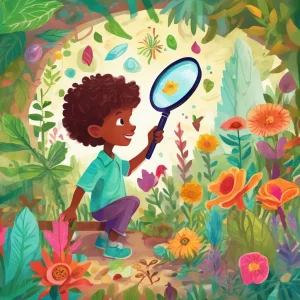Activity
Similar Activities
Enchanted Tea Party Adventure: A Magical Journey
Children’s Age: 3 years
Activity Duration: 10 – 15 minutes
Join us for a Magical Tea Party Adventure! Enhance your child's play skills, social-emotional growth, and language abilities through a whimsical tea party experience. Gather teacup…
Activity Duration: 10 – 15 minutes
Imaginative Tales: Storytelling with a Twist
Children’s Age: 3–6 years
Activity Duration: 5 – 15 minutes
"Storytelling with a Twist" is an engaging activity designed for children aged 3 to 6 to boost self-regulation, cognitive development, and play skills. Create a cozy storytelling c…
Activity Duration: 5 – 15 minutes
Picnic Adventure: Pretend Cooking Play for Toddlers
Children’s Age: 2–3 years
Activity Duration: 10 – 30 minutes
An imaginative activity where children (ages 2-3) engage in pretend cooking during a picnic adventure.
Activity Duration: 10 – 30 minutes
Outdoor Tea Party and Fix-it Fun for Toddlers
Children’s Age: 2–4 years
Activity Duration: 10 – 25 minutes
Let's create a fun Outdoor Tea Party and Fix-it Station for kids aged 1 to 3. Set up a table and chairs, play tea set, pretend tools, household items for fixing, a picnic blanket, …
Activity Duration: 10 – 25 minutes
Musical Freeze Painting: A Creative Dance Adventure
Children’s Age: 3 years
Activity Duration: 10 – 20 minutes
An engaging activity combining painting with musical freeze dance to promote creativity and play skills.
Activity Duration: 10 – 20 minutes
Enchanted Sound Symphony: Sensory Sound Walk
Children’s Age: 2 months – 3 years
Activity Duration: 5 – 25 minutes
Exploring sounds and textures through a sensory walk outdoors.
Activity Duration: 5 – 25 minutes
Adventure of Rhyme and Move Outdoor Magic
Children’s Age: 3–4 years
Activity Duration: 10 – 25 minutes
"Rhyme and Move Outdoor Adventure" is a fun activity that combines nature-themed rhymes with movement in an outdoor setting. Children get to explore the outdoors, practice language…
Activity Duration: 10 – 25 minutes
Enchanted Nature Quest: The Sensory Nature Hunt
Children’s Age: 0 month – 6 years
Activity Duration: 10 minutes
Let's go on a Sensory Nature Hunt! We will use our senses to find items like pinecones, leaves, rocks, and flowers. You can bring a basket, a list of things to find, and maybe a ma…
Activity Duration: 10 minutes
Unity Blossoms: Family Handprint Tree
Children’s Age: 0 month – 6 years
Activity Duration: 10 minutes
Let's create a special "Family Handprint Tree" together! This fun activity brings families closer and helps kids grow in many ways. You'll need paper, colorful paints, brushes, wet…
Activity Duration: 10 minutes
Imaginary Adventures: Mini Bowling Feelings Story Game
Children’s Age: 2–5 years
Activity Duration: 10 minutes
An engaging activity promoting sensory development, creativity, reading, and storytelling.
Activity Duration: 10 minutes
Musical Storytelling Adventure
Children’s Age: 2–12 years
Activity Duration: 5 – 15 minutes
Let's go on a Musical Storytelling Adventure! We will read a fun storybook together and make music with shakers and drums. As we read, we can use the instruments to create sounds t…
Activity Duration: 5 – 15 minutes


























